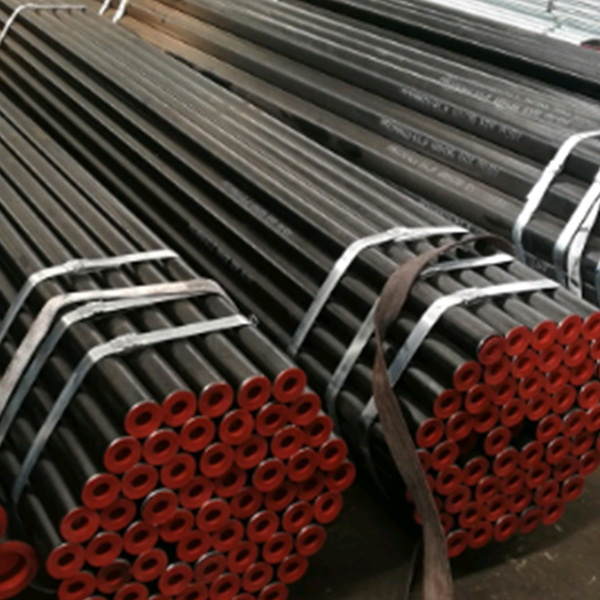How To Install Galvanized Steel Drain Pipes
Date:
2024-11-19
Installing galvanized steel drain pipes may initially seem daunting, but with proper planning and execution, you can achieve a reliable and efficient drainage system
1. Introduction to Galvanized Steel Drain Pipes
Galvanized steel drain pipes are an excellent choice for a variety of drainage applications, providing durability and resistance to corrosion. The galvanized coating helps protect the steel from moisture, making it a reliable option for both residential and commercial projects. In this guide, we will walk you through the entire process of installing galvanized steel drain pipes, ensuring that your drainage system functions effectively for years to come.

2. Benefits of Using Galvanized Steel Drain Pipes
Choosing galvanized steel drain pipes comes with numerous advantages:
Durability
Galvanized steel is known for its strength and long lifespan, often lasting for over 50 years when properly installed and maintained.
Corrosion Resistance
The zinc coating on galvanized pipes provides excellent protection against rust and corrosion, making them ideal for outdoor and underground applications.
Cost-Effectiveness
While galvanized steel may have a higher initial cost compared to plastic alternatives, its longevity and durability make it a cost-effective choice in the long run.
Availability
Galvanized steel pipes are readily available at most hardware stores, making them accessible for both DIY enthusiasts and professional contractors.
3. Planning Your Installation
Before starting your installation project, it’s crucial to plan thoroughly. Identify the drainage needs of your property, considering factors such as the volume of water to be drained, the layout of the drainage system, and potential obstacles. Take measurements and create a detailed diagram of your proposed installation.
4. Essential Tools and Materials
To ensure a smooth installation process, gather the following tools and materials:
- Galvanized steel drain pipes
- Pipe cutter or hacksaw
- Measuring tape
- Level
- Pipe fittings (elbows, tees, etc.)
- Pipe joint compound or tape
- Tools for digging (shovel, post-hole digger)
- Safety gear (gloves, goggles)
5. Preparing the Site for Installation
Clearing and preparing the site is an essential step that involves:
Excavating the Trench
Dig a trench for the pipe installation according to the planned layout. The trench should be deep enough to accommodate the pipes while ensuring proper drainage slope. A minimum slope of 1% (or 1 inch per 10 feet) is recommended for effective drainage.
Checking Local Regulations
Before you begin, check local building codes and regulations to ensure compliance. This may include obtaining permits or adhering to specific installation standards.
6. Step-by-Step Installation Process
Now that you have prepared the site, it's time to install the galvanized steel drain pipes. Follow these steps carefully for optimal results.
6.1 Measuring for Drain Pipes
Accurate measurements are critical for a successful installation. Measure the length of each section of pipe needed and account for any fittings. Remember to add extra length for making cuts and connections.
6.2 Cutting the Pipes to Size
Using a pipe cutter or hacksaw, cut the galvanized steel pipes to the desired lengths. Ensure that the cuts are straight and clean to facilitate proper joining.
6.3 Joining the Pipes
To connect the pipes, use appropriate fittings such as elbows or tees, depending on your layout. Apply pipe joint compound or tape to the threads of the fittings before tightening to ensure a secure and leak-free connection.
6.4 Sealing the Connections
After joining the pipes, seal the connections properly. Ensure that all joints are tight and free from debris. For added security, consider using a welding method for high-stress areas, though this is often not necessary for basic drainage applications.
7. Testing Your Drainage System
Once the installation is complete, it's vital to test the drainage system. Run water through the pipes to check for leaks and ensure proper flow. Verify that the slope is adequate for effective drainage and make any necessary adjustments.
8. Maintenance Tips for Longevity
To prolong the life of your galvanized steel drain pipes, follow these maintenance tips:
- Regularly inspect the drainage system for signs of corrosion or damage.
- Clear any debris from the drainage area to prevent blockages.
- Consider applying a protective coating to exposed areas to enhance corrosion resistance.
- Monitor for leaks and address them promptly to prevent further damage.
Installing galvanized steel drain pipes may initially seem daunting, but with proper planning and execution, you can achieve a reliable and efficient drainage system. By following this comprehensive guide, you will be well-equipped to tackle your installation project confidently. Remember to prioritize safety, adhere to local regulations, and conduct regular maintenance for long-lasting results. Embrace the strength and durability of galvanized steel, and enjoy peace of mind knowing your drainage system is built to last.
Key Words:
Related News


